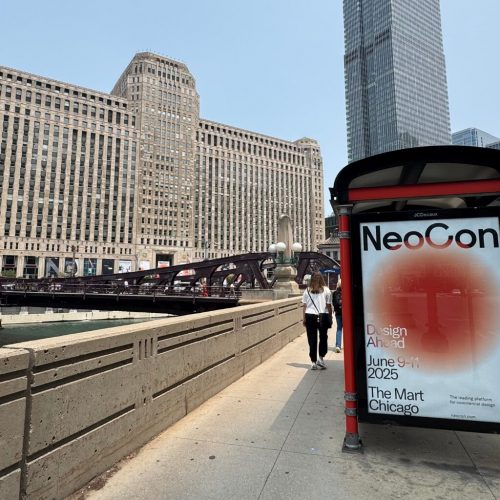By Leo Shveyd, Co-Owner of Advanced Wellness
The overwhelming number one concern for athletes is dealing with injuries. This means healing from those injuries, quickly and permanently. When this occurs, the athlete can re-dedicate more time to developing a foundation of wellness, improving their athletic performance and building their skills. Getting healthy, and doing so as quickly as possible, are the most paramount requirements when injured.
But how do you do this in the most impactful and efficient way? Is there a BETTER way?
In this 4-part series focused on how to heal an acute sports injury, we will explore techniques, approaches and the latest research surrounding:
The Original “RICE” Approach to Healing
The Physiology of the Healing Process: Blood Flow and Inflammation
Your Role in the Healing Process: From Force to Movement
Non-Ice Approaches to Healing: Electrical Stimulation, Immobilization, Cryotherapy, Blood-Flow Restriction Training & Anti-inflammatory Medications
Please note: What I share with you is based on personal experience and what I believe is “the BETTER way” having worked with many athletes over a long period of time. Research studies in this space will never exactly match the exact parameters of “your situation” in terms of a physical injury and its impact to your body so, here, I do my best to draw upon general principles that should work for most athletes, in most instances. Please consult your personal medical professional and use your best judgment in applying any of the techniques below.
The Original “RICE” Approach to Healing
In 1978, Dr. Gabe Mirkin developed the R.I.C.E. (Rest, Ice, Compression, Elevation) approach to healing as a way for his patients to proactively have a readily available plan when they sustained an acute injury. But fast-forward 43 years later, and the research now shows that “R”est* and “I”cing may not be the best approach, with regard to healing.
In 2014, Dr. Gabe Mirkin reconsidered his position on R.I.C.E, stating ice “may delay healing, instead of helping.” Mirkin went on to say: “[c]old and ice are safe pain medicines, but they delay healing” and “also interferes with the athlete’s speed, strength, endurance, and coordination”.[1] Supporting research has corroborated Mirkin’s latest position: “[i]t needs to be stressed that there is not a single randomized, clinical trial to validate the effectiveness of the RICE-principle in the treatment of soft tissue injury.”[2]
* As an aside, and speaking as a former practicing attorney, telling someone to “rest” limits liability. Suggesting a more active approach to healing, however, even though it may be more impactful, carries with it increased liability for the practitioner because it requires precise execution on the part of the client/patient.
Three Good Reasons to Use Ice for Healing Injuries
So if icing is not beneficial for healing, recovery and athletic performance, what purpose does it serve? Icing is situation and goal dependent. Always ask and answer: who is the ice for and what is the purpose of the application?
Here are three ways to appropriately use ice for injuries and other conditions:
To numb the nerve endings around the injured site to temporarily address pain,
To decrease body temperature from overheating,
To delay the inflammatory process to reduce blood flow (e.g. during an event to allow you to finish. For example, icing your ankle on the sidelines in the middle of a game with the intent of returning to action. But I would recommend you try to “walk it off/or move it” and possibly support it with tape or a brace first, compressing the area.)
Icing to address the pain itself, while understanding fully that it doesn’t impact the source of the pain, is perfectly acceptable. You’re putting a metaphorical band-aid on your pain temporarily, but not healing the reason the pain exists.
How Long Should You Use Ice?
The answer is “as short as possible to numb the pain (e.g. 5 minutes) and no longer than ten minutes”. And you should allow your body to return to normal body temperature before considering icing again.
About twenty years ago, my friend and mentor, Mel Young (may he rest in peace) showed me a research study that indicated that at minute 13 of ice application, your body actually has the opposite effect, for those that apply ice “to prevent inflammation”. Instead of constricting blood vessels and limiting blood flow to the injured site, the blood vessels dilate (widen) and allow more blood flow to the region. With all this in mind, if you must, apply ice for 5-10 minutes, with 12 minutes being the maximum. Finally, please understand whether you are icing for the three reasons outlined above, or for some other reason that ice will not help with.
“[I]ce is commonly used after acute muscle strains, but there are no clinical studies of its effectiveness.”[3] Furthermore, ice may also adversely impact recovery from strenuous physical activities: “topical cooling, a commonly used clinical intervention appears to not improve but rather delay recovery from eccentric exercise-induced muscle damage.”[4] Ice may also negatively affect future athletic performance. “There was evidence from six studies that cooling adversely affected speed, power, and agility-based running tasks…”[5] (Note, however, that it matters what the timeframe is from when the ice is applied to when the athlete is asked to perform. The longer the time period between the application of ice and the performance, the less impactful are the effects of the icing session.)
If you want to heal an injury quickly and thoroughly, speed recovery from training and/or improve future athletic performance, my experience along with most of the latest research indicates, skip the ice. Understand, this process takes time however, so what you forego in the short-run (i.e. feeling better because of the pain relieving aspect of ice), will result in a more complete and robust healing process. I’m completely supportive of you using ice (while knowing it comes with the consequences that it delays or possibly interferes with the natural healing process). It’s a trade off. While ice has its place, I wholeheartedly believe that appropriate movement is a much more efficient and impactful longer-term solution to healing injuries, recovery and athletic performance.
Is Heat Better?
When applied to an injured area, heat is helpful to bring fresh blood to an injured area and stimulate blood flood. Its effect on the lymphatic system is limited however. To maximize healing, therefore, we actually need both.
[1] Mirkin, G., Dr., Why Ice Delays Recovery.
[2] Regeneration of Injured Skeletal Muscle After the Injury, Muscles Ligaments Tendons Journal.
[3] Bleakley, C., Glasgow, P., & Webb, M. (2012). Cooling an acute muscle injury: Can Basic Scientific Theory Translate into the Clinical Setting? British Journal of Sports Medicine, 296-298.
[4] Tseng, C., Lee, J., Tsai, Y., Lee, S., Kao, C., Liu, T. Kuo, C. (2013). Topical Cooling (Icing) Delays Recovery from Eccentric Exercise–Induced Muscle Damage. Journal of Strength and Conditioning Research, 1354-1361.
[5] Should Athletes Return to Sport After Applying Ice? A Systematic Review of the Effect of Local Cooling on Functional Performance, Sports Medicine.
The post How to Heal an Acute Sports Injury: Techniques, Approaches and the Latest Research appeared first on Advanced Wellness.


